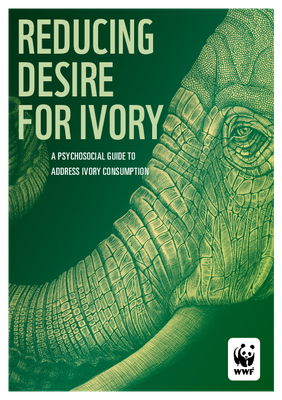Reducing Desire for Ivory: A Psychosocial Guide to Address Ivory Consumption

This Guide presents a psychosocial approach to demand reduction; one that acknowledges the relationship between individual psychology and the social context in which people live. By utilizing a psychosocial approach, the Guide asserts, projects may better understand ivory consumers and avoid sending ineffective messages by offering an opportunity to “redirect” their basic desires for the harmful product.
A collaboration with WWF, this guide shares a set of psychosocial insights and tools for reducing consumer demand — or, as we have reframed it, desire — for ivory. It presents a new lens through which to view conservation campaigns and their audiences — one that takes on the complex psychological, neuroscientific, emotional, social, and cultural dimensions of ivory consumption. It is intended to support efforts that directly address the active market for these goods, including groups that are hardest to reach. This approach is not unique to ivory, yet presents an opportunity to take our work on the ivory market further.
This guide is a first step in teaching conservationists how to apply a psychosocial lens to our work. The approach it outlines is not meant to replace current campaign strategies, but to build upon their strengths and amplify their effectiveness.

